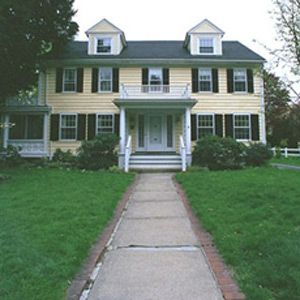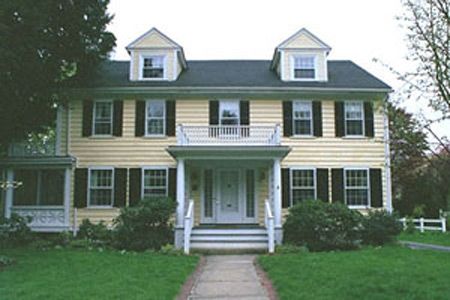
One of the reasons we picked the Winchester house for this year’s main project was the relative predictability that comes from working on what is a fairly young house. It was built in 1922 with methods and technologies that are familiar to contemporary builders — a poured concrete foundation, a stick frame made with dimensional lumber, standard-issue double-hung windows — which, when combined with the relatively short time it’s been around, means that not too many things have been able to go wrong. Sure, plumbers hacked the heck out of some of the master bathroom’s joists, the chimney has had some unorthodox and unsafe repairs, a bit of rot has hit the sun porch, the place is covered with peeling paint…but, hey, we’ve seem much, much worse. The worse ones have needed radical, time-consuming surgery to get back on their feet; in Winchester, we hope to spend more time freshening the place, as opposed to rebuilding it. So far there have been very few surprises.
But the other day, something happened that proves that there are only so many things you can control as you try to build your dream house. The “Flats” neighborhood, as it’s called, is laid out in a grid, with one street’s backyards touching those of the next. We were only vaguely aware of our house’s backyard neighbor, as a dense screen of hemlocks blocked the view. Not any more. The house was put up for sale by its elderly owner, and went for over the asking price in a matter of days. Maybe a third of an acre, maybe 1,400 square feet inside, 3 bedrooms, 1 1/2 baths, a one-story ranch with an attached garage, circa 1960…There were 19 bidders…Sold! For $700K! $120,000 over asking! One morning a landscape crew showed up, cut down all the hemlocks, and left one exposed house. It was as if our Leave It to Beaver neighborhood had suddenly gone Levittown.
All is not lost, though. The new owners are a lovely retired couple, downsizing and moving to the town where their kids live. She is an avid gardener, a skill she shares with our homeowner Kim, and took down the hemlock tangle to make a fresh start of the backyard. Working together with our new neighbors on a shared landscape raises all kinds of exciting possibilities, but the shock of seeing that naked house is one we won’t forget.
However, the luckiest part of all is the fact that the couple does not plan to alter the building in any significant way. We and the rest of the neighborhood have dodged a McMansion bullet. McMansionization, mansionization, teardowns — the syndrome is sweeping the nation. Smaller homes on valuable lots are razed and replaced by houses that often have very little in common with their neighbors but have one thing in common with each other: absolute maximization of square footage. Our neighbor is a case in point: It isn’t the house that fetched $700K, it’s the lot. Most of the 19 bidders were contractors. By rights, someone could build a two-and-a-half-story,12,000 square foot structure on the site. For a developer, in this hot market, a tidy profit could well await, especially if he kept his costs down (read: built for looks, not for lasting quality). For a homeowner, such a build-out would be a good way to buy into a nice neighborhood.
Even though our neighbor’s house is something of a late addition to the Flats, which was built mostly in the early decades of the 20th century, its modest scale contributes to the grain and rhythm of the streetscape. In a recent article on the problem in the Christian Science Monitor, Richard Moe, president of the National Trust for Historic Preservation, said, “Teardowns radically change the fabric of a community. Without proper safeguards, historic neighborhoods will lose the identities that drew residents to put down roots in the first place.”
As our homeowners, Kim and Bruce, begin to put their roots down in Winchester, they can take some comfort that the town is paying attention to its older homes. Architect David Stirling reports that a six-month demolition delay is applied to those homes designated as having “historic value.” Even though such a designation is currently voluntary, “It gives a kind of ‘cooling off’ period in which people have an opportunity to think hard about whether or not a building deserves to be torn down,” he says. “I think it’s a step in the right direction.” We couldn’t agree more.

